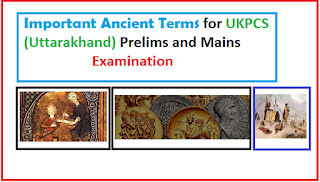Important Ancient Terms for UKPCS (Uttarakhand) Prelims and Mains Examination
uksssc 13:30:00
Important Ancient Terms for UKPCS (Uttarakhand) Prelims and Mains Examination

Sabha Assembly of few select ones Samiti Larger Assembly Dharamamahamatya Most important post created by Asoka. |
Important Ancient Terms for UKPCS (Uttarakhand) Prelims and Mains Examination  Reviewed by uksssc on 13:30:00 Rating:
Reviewed by uksssc on 13:30:00 Rating:
 Reviewed by uksssc on 13:30:00 Rating:
Reviewed by uksssc on 13:30:00 Rating:





















